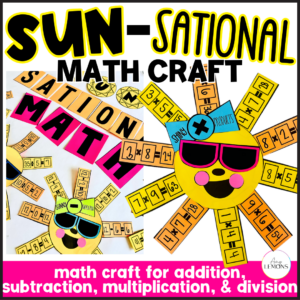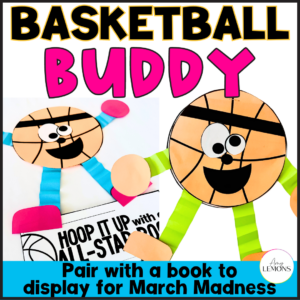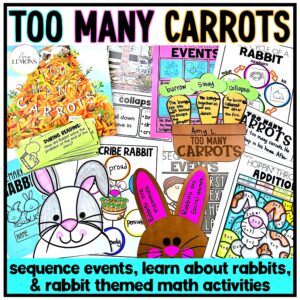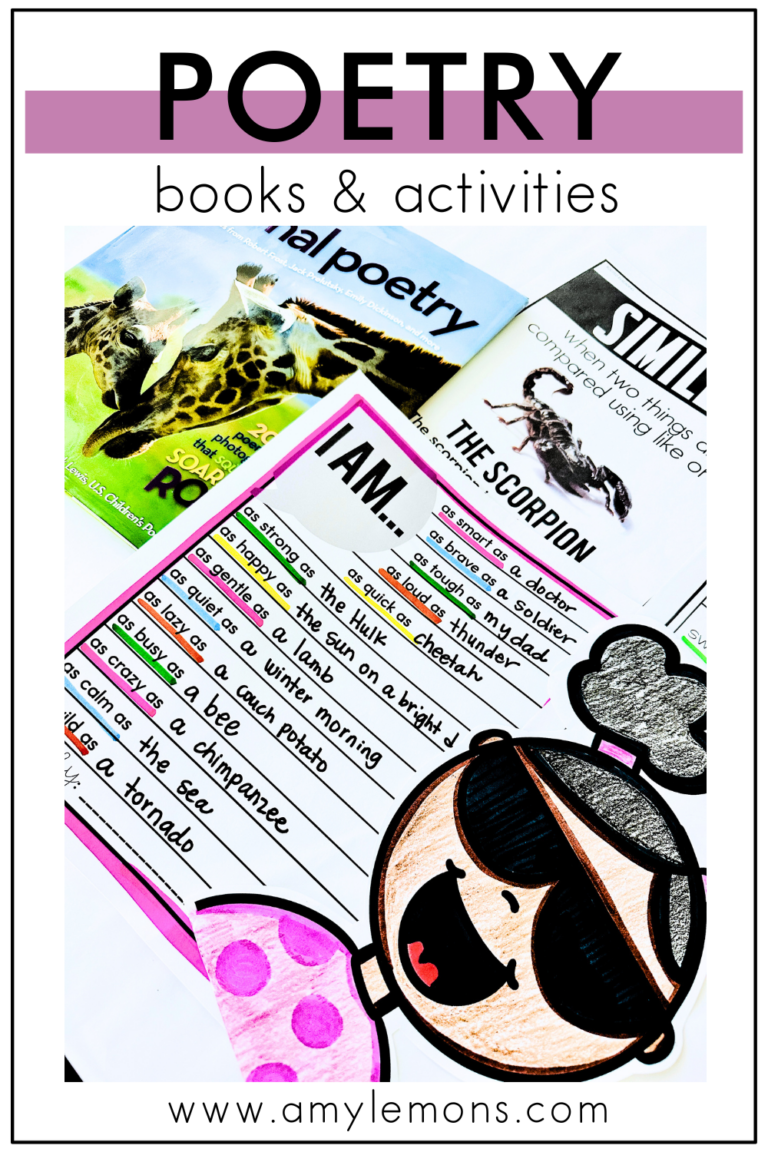
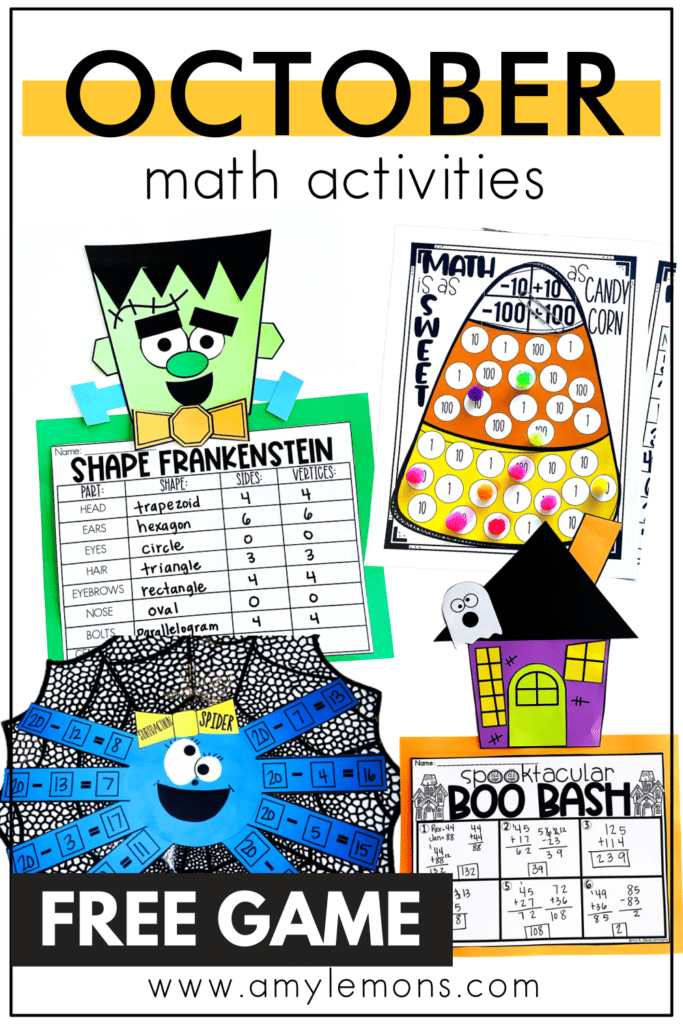
I think it’s safe to say that the most fun I’ve had inside the classroom happened between October through December. I am all about holidays and enjoy celebrating, decorating, and creating activities for each inside my classroom! When October rolls around, I go ALL IN on themed resources. I like to pull out my best October math activities for Halloween and Fall in general!
If you’re just as obsessed as I am with all the fun to be had in the classroom during the last months of the year, then read on! I’ve rounded up four of my favorite Halloween-themed math ideas, worksheets, and games, some of which can be used for differentiated instruction inside the classroom. I’ve also added a FREEBIE for you to grab on your way out.
Did I mention three of these doubles as a craft for your October bulletin boards?!
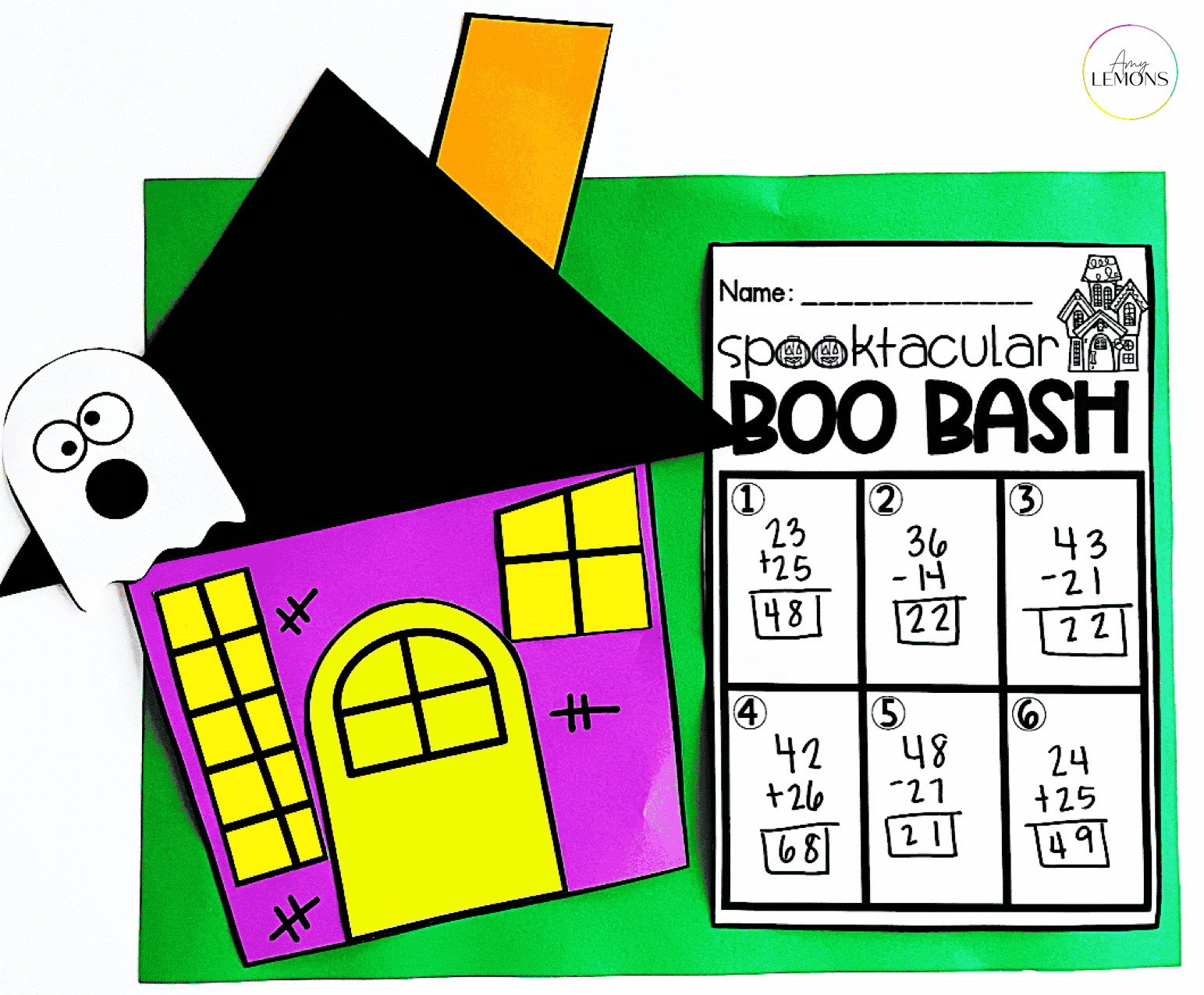
Why go to a haunted house when you can bring the haunted house to you?!? This Haunted House math activity is one of my favorite creations from our Solve to Create series. Not only are students proving how skilled they are at solving word problems, but they will be having tons of fun along the way.
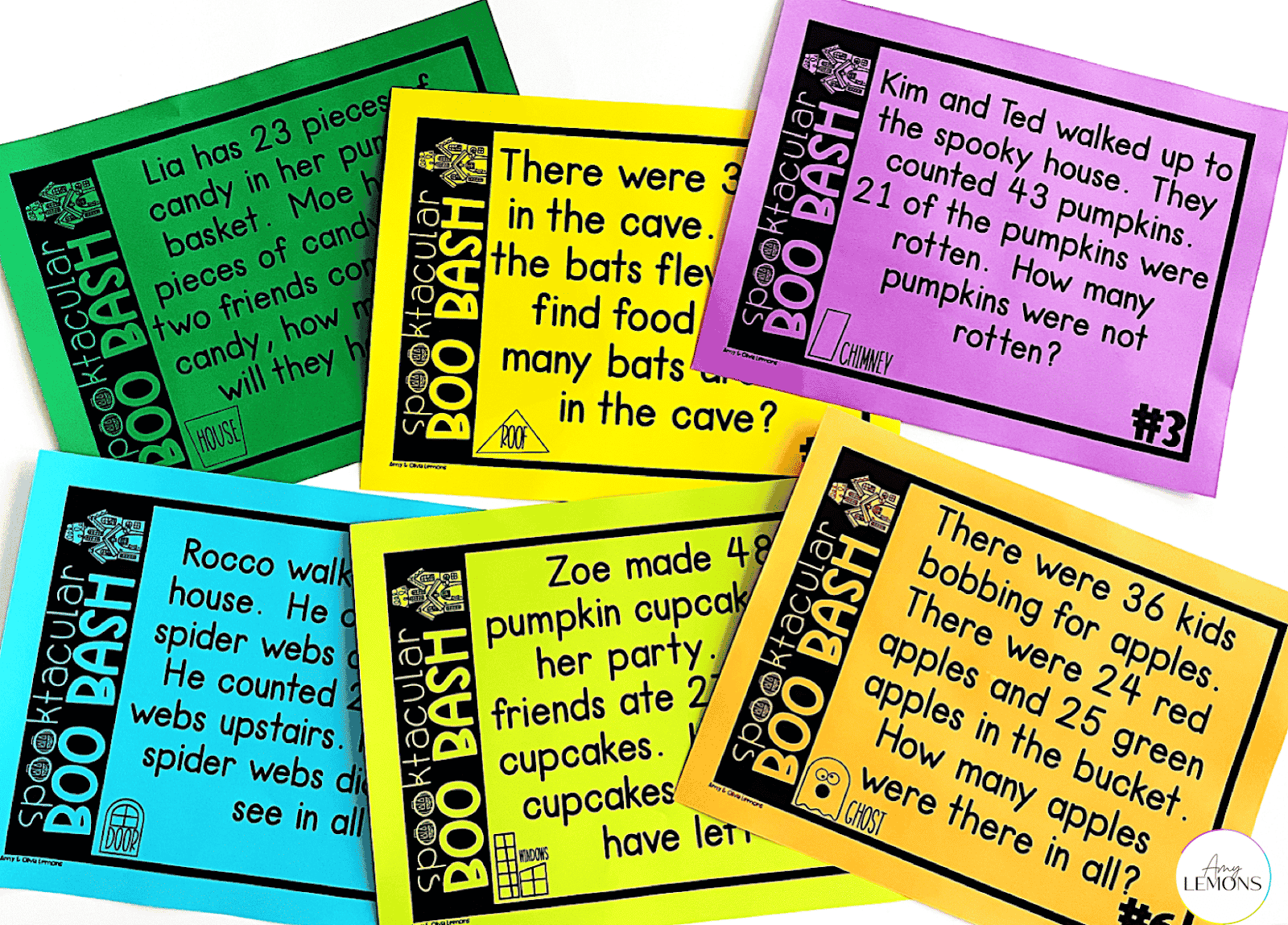
In Solve to Create a Haunted House, students will be solving spooky or fall-themed word problems. Each word problem answered correctly earns them one piece of their haunted house craft. Use the provided task cards or use the editable templates to create your own word problems and differentiate. Or you can use them for an entirely different subject!
You can spread the task cards around the room and have students stop by each station to solve problems and earn their pieces.
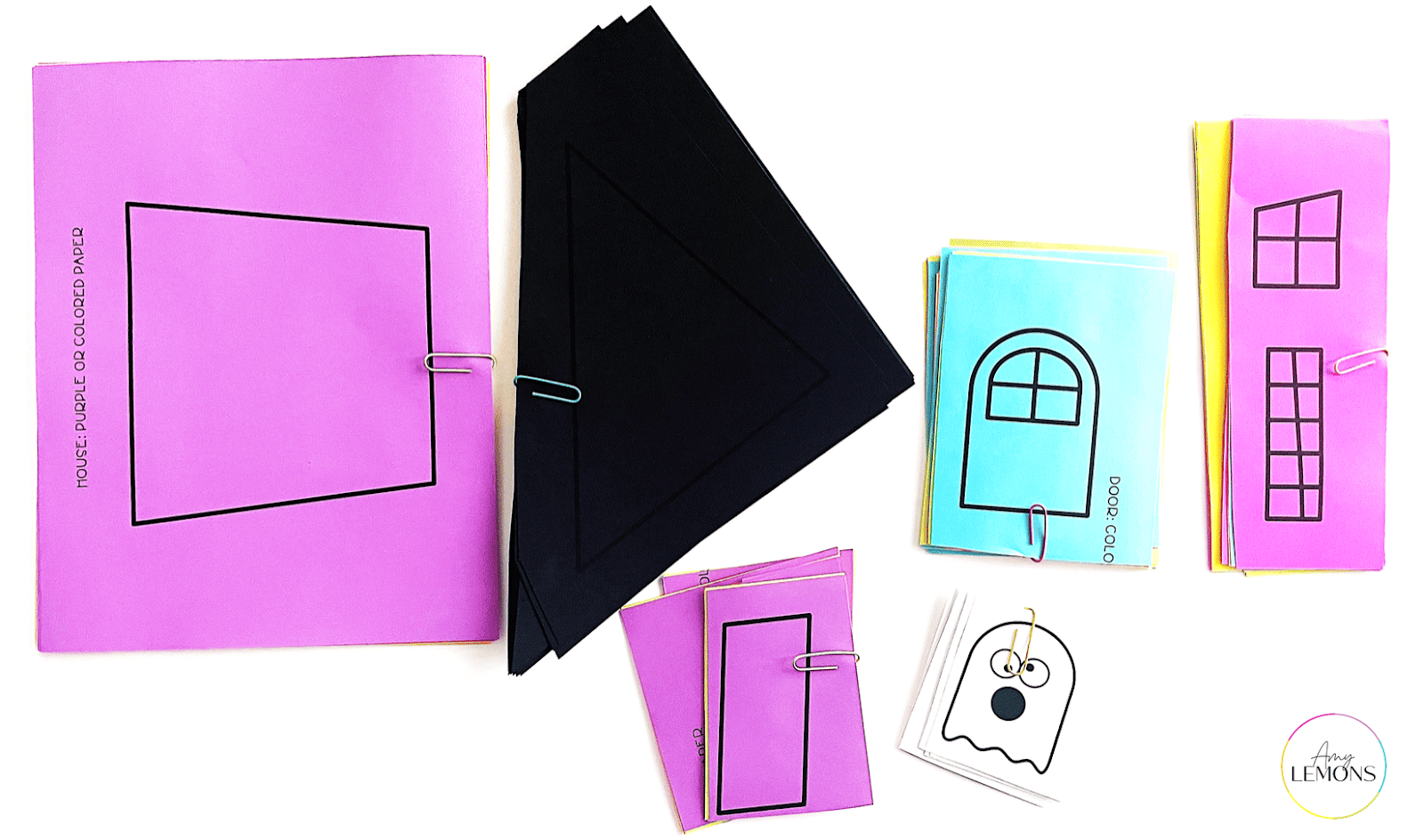
Once they’ve solved all of the problems correctly, they will take their pieces and craft their own haunted house! This is an amazing way to keep your students engaged in the lesson, practicing their problem-solving skills, and incorporating a bit of art and crafts.
You can find the Solve to Create a Haunted House activity in my TPT shop right HERE.
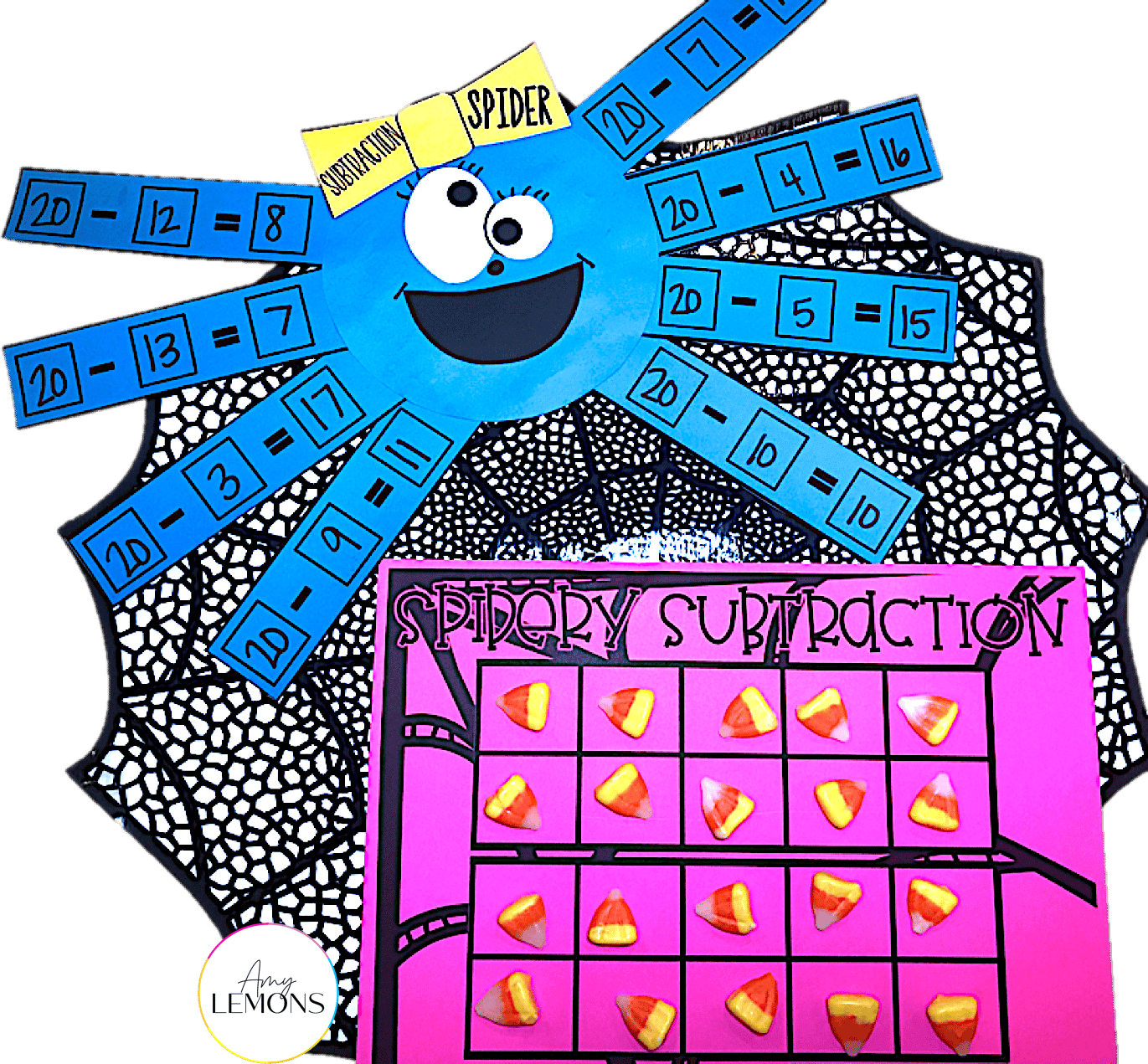
Speaking of arts and crafts, this Spider Math Craft is the PERFECT student-made art to display across your October Bulletin Board! But it’s not just a craft. Students will be using the “equation legs” to solve addition, subtraction, multiplication, or division problems!
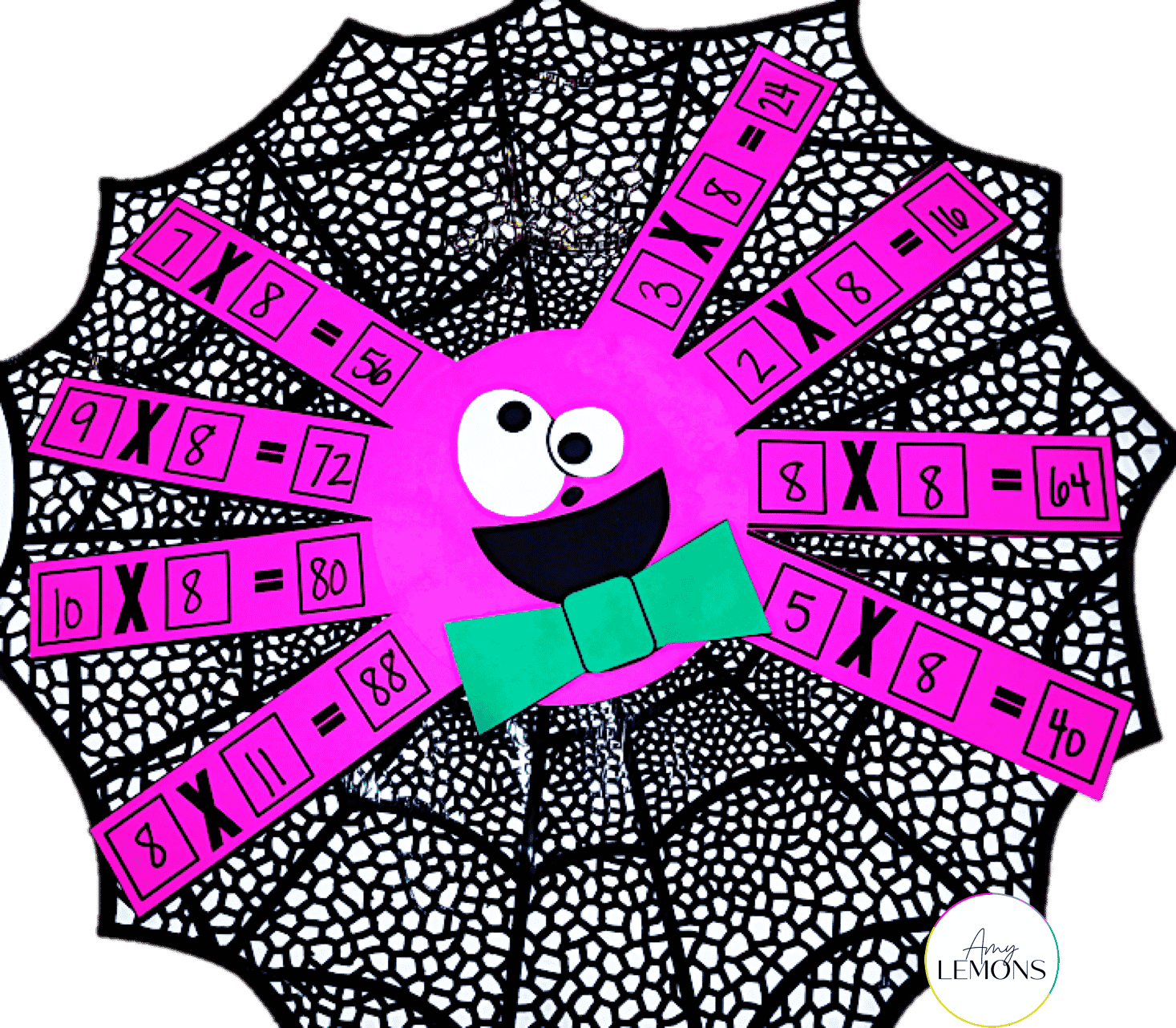
These are completely editable as you can fill in the numbers to create the equations you want for your students. This October math activity is a wonderful companion to use with other spider lessons you may be completing in science or reading. I like to have an entire spider week dedicated to learning about spiders, crafting spiders, and solving spider math problems!
You can find this Spider Math activity on my TPT shop HERE. And you can find more spider-inspired activities plus books in THIS post.
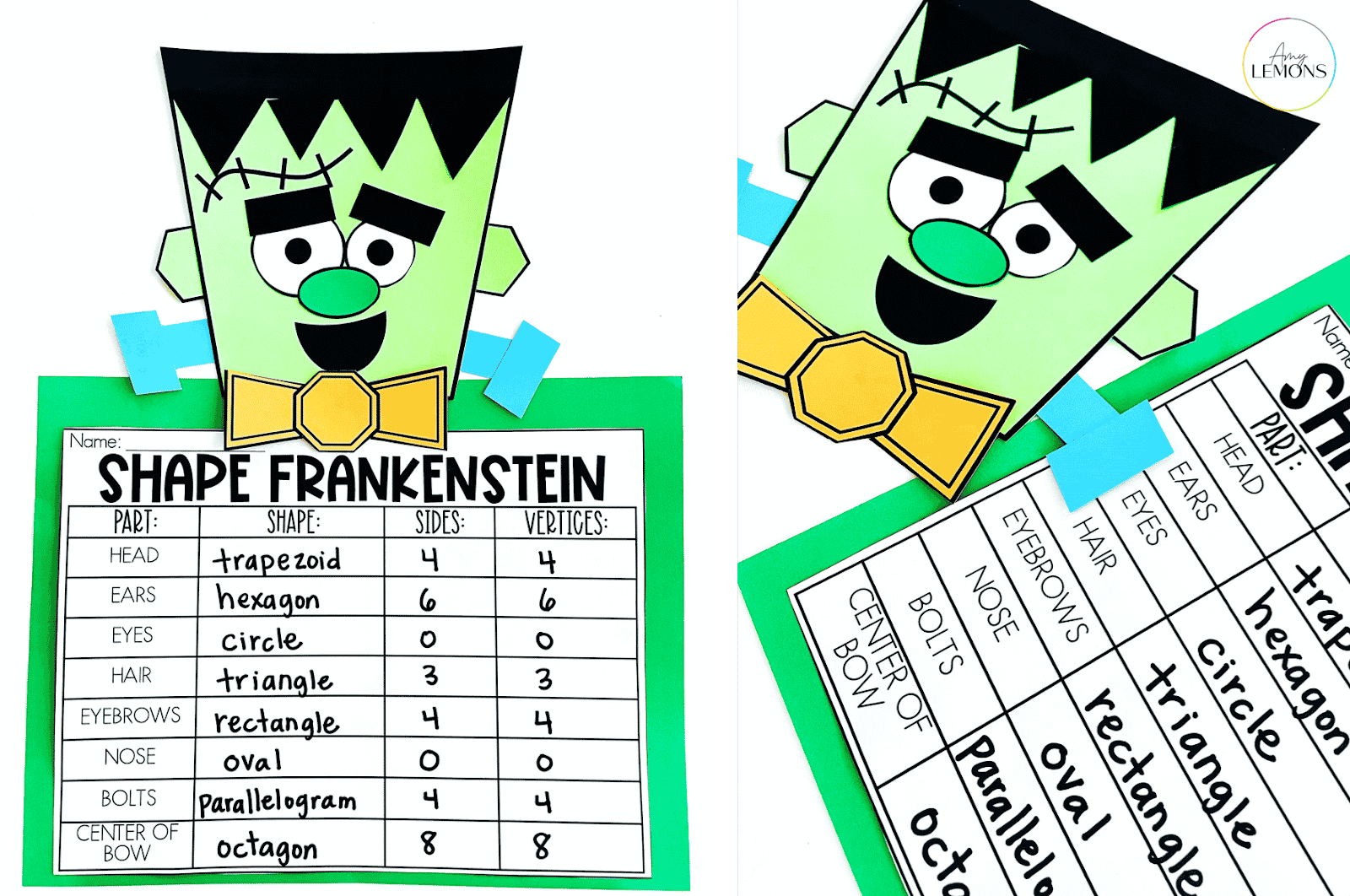
Playing around with shapes is intrinsically motivating for students. It’s like using building blocks, trying to put the pieces together and create new things. I take this same concept and transform it into something a little spookier with the Shape Frankenstein Halloween math activity.
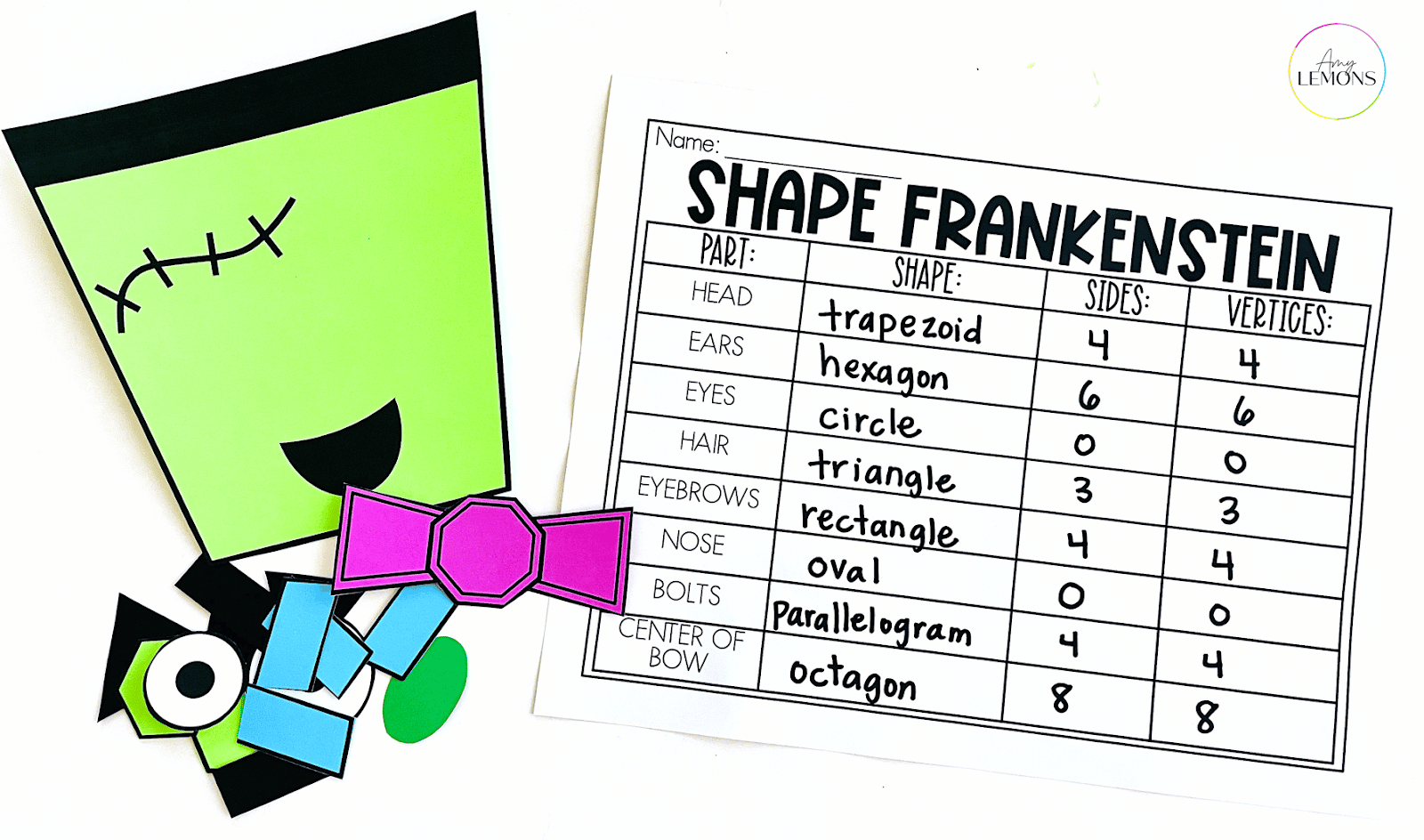
Similar to Solve to Create, students will be building their own Frankensteins! But instead of solving word problems, they will be recording which shape correlates to each body part. With varied recording sheets, your students can record the shape, sides, and vertices in whichever way works for your classroom.
Pull out this October math activity when you’re looking to identify which 2D shapes your students recognize. The shapes included in the Frankenstein craftivity are Trapezoid, Triangle, Rectangle, Circle, Oval, Parallelogram, Octagon, and Hexagon. And if you have any virtual students, you can snag the digital activity, too!
You can find the Shape Frankenstein activity in my TPT shop right HERE. You can see how I use this activity in the classroom along with a few Frankenstein book recommendations in THIS post.
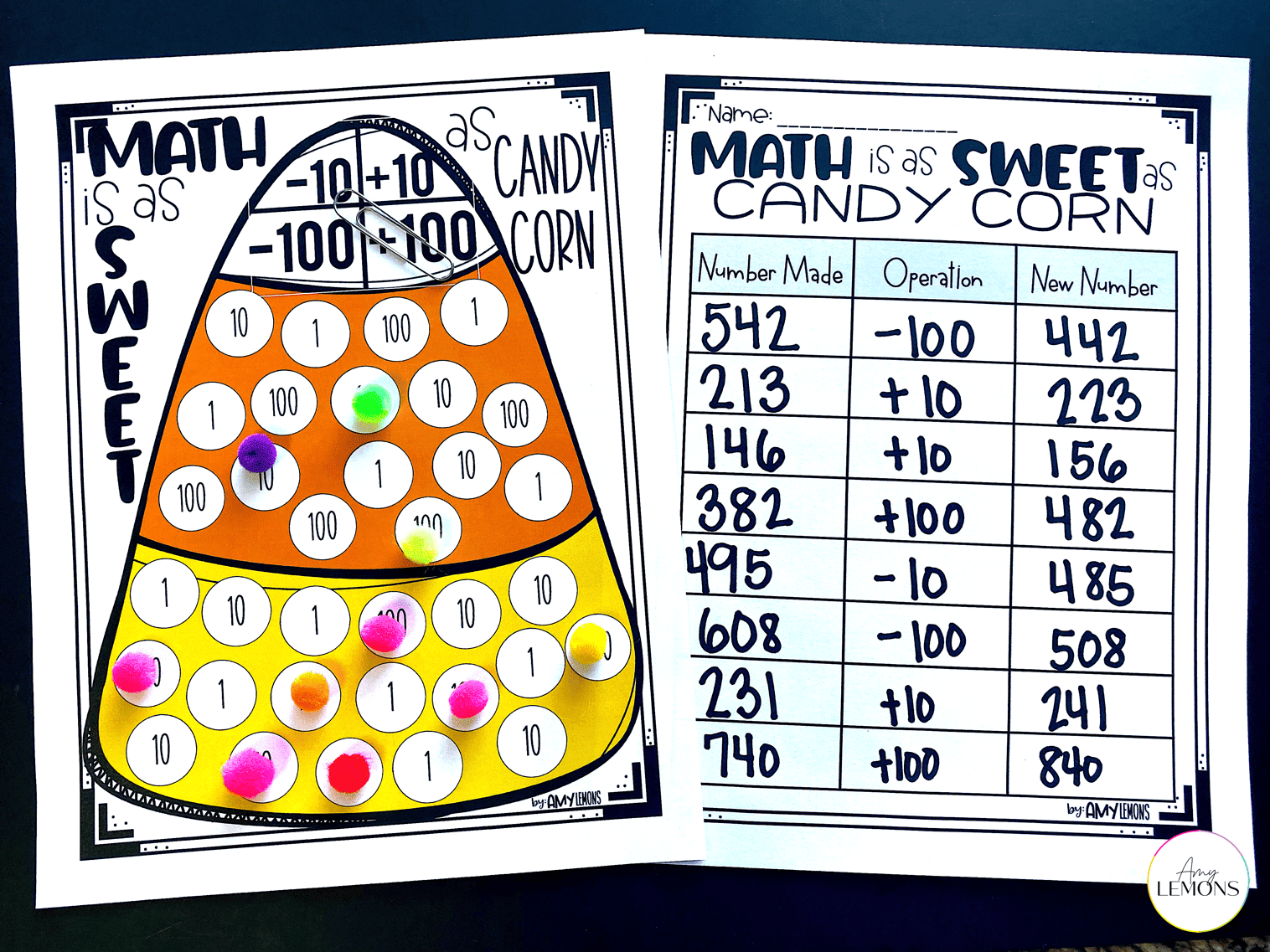
Candy corn might be in the top 3 worst candies of all time (which is highly debatable among many), but it just screams Halloween and Fall! And it was the inspiration behind this Candy Corn Math Game.
With this FREEBIE, students can toss or place poms OR candy corn to create a number. Your students will spin to see if they will be adding or subtracting 1/10/100/1,000 to the number made. No spinner? No problem! Just use a paperclip and a little finger.
You can grab this FREE math game with six different versions for various grade levels using the form below!
If you want even more candy corn fun, you can check out this FREEBIE candy corn ELA activity for retelling a story with BME in THIS blog post.
Happy October in the classroom, Friends!
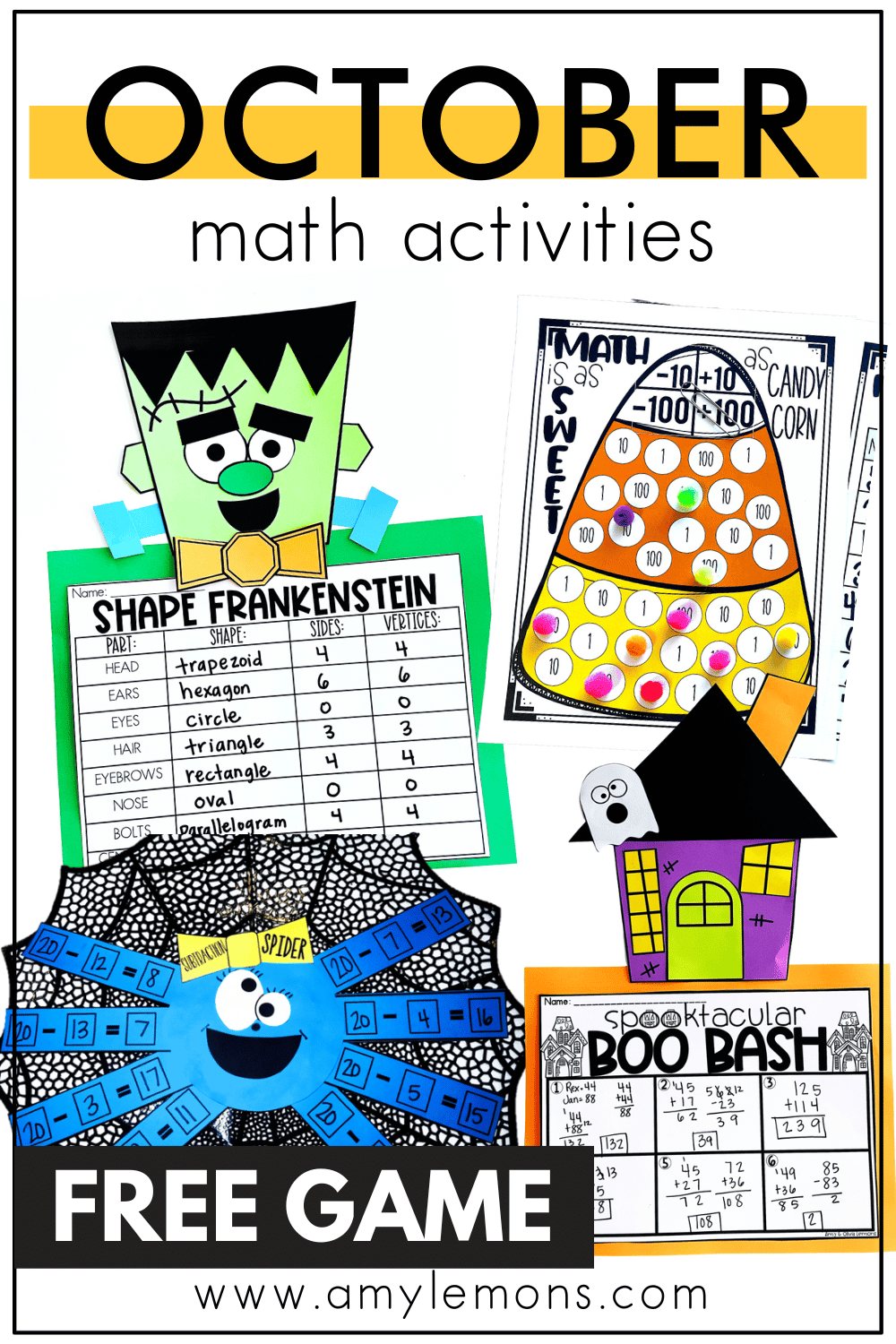

Hey, y’all! My name is Amy Lemons and I am passionate about providing students with both engaging and effective standards-based Math and ELA lessons.
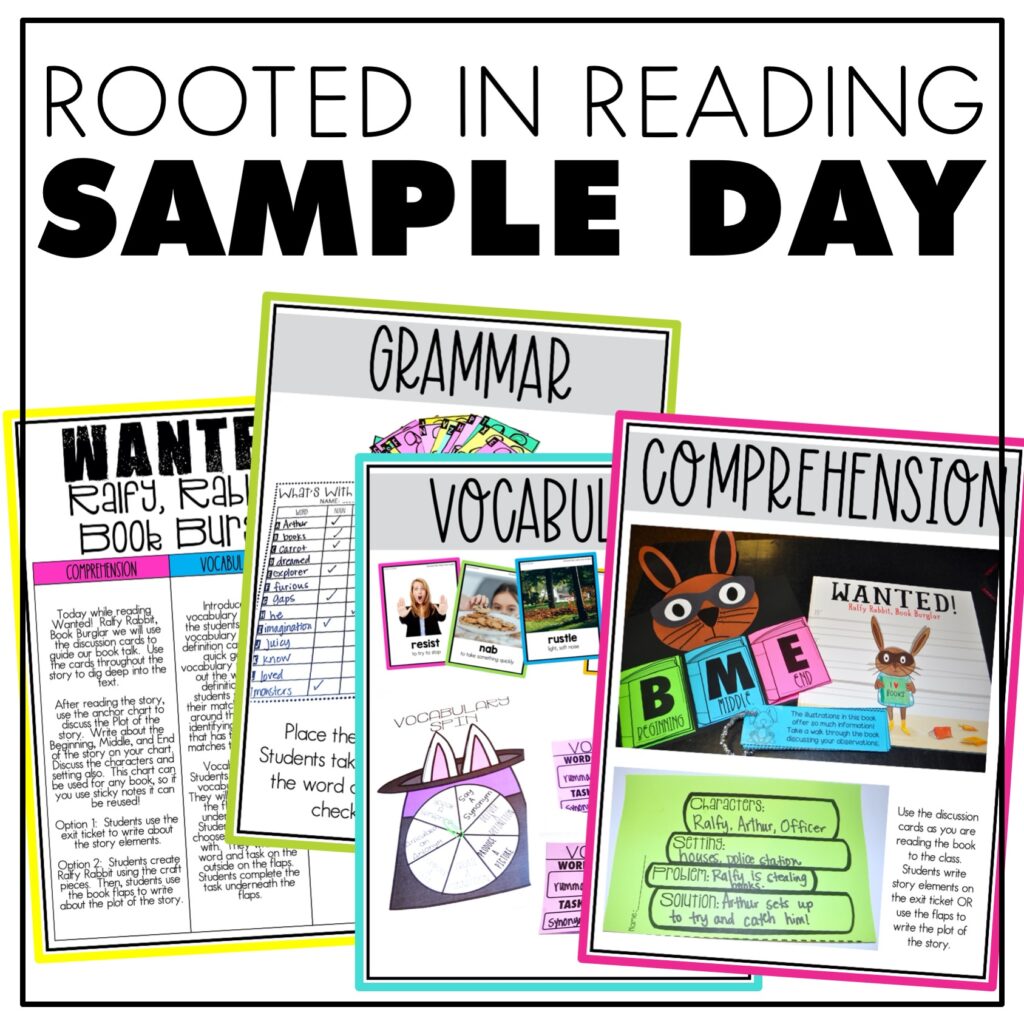
Sample a day of Rooted in Reading with these lesson plans and activities for Reading Comprehension, Vocabulary, and Grammar!
